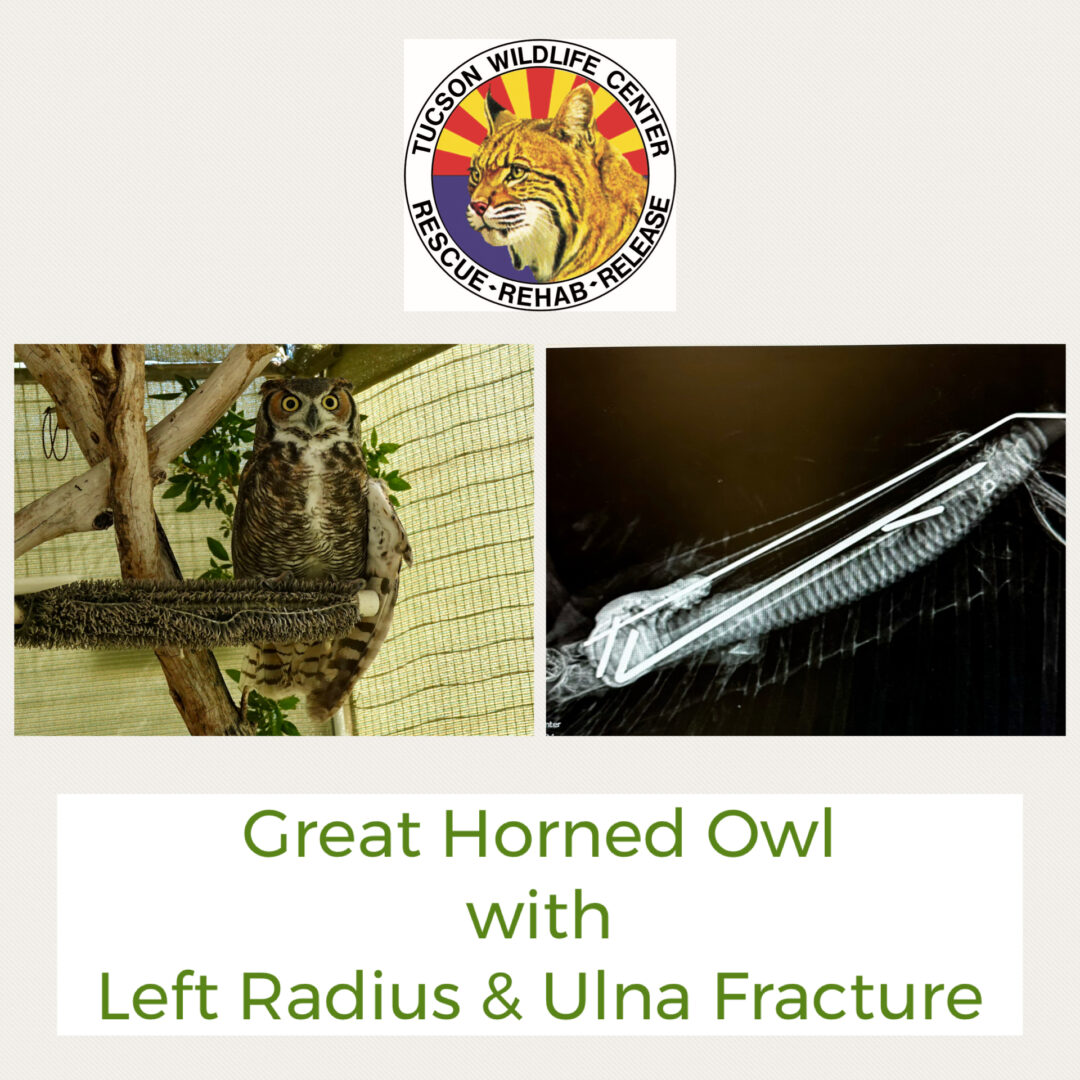
Great Horned Owls
Tucson Wildlife Center’s rescue team recently responded to three separate Great Horned Owl rescues. In each case, the owl was found near a roadway after an apparent collision with a moving vehicle. All three birds suffered a combination of head and eye trauma, and varying degrees of fractures from the impact.
Thanks to fast action by our rescue team and our veterinary staff, all three owls are receiving medical treatment and are responding well to rehabilitation. We are hopeful each will make a full recovery and return to the wild.
Great Horned Owls fly and hunt low to the ground, especially at night, scanning roadsides for prey such as mice, rats, and rabbits that are attracted to the warmth of pavement and roadside vegetation. When headlights suddenly illuminate an owl’s eyes, their vision takes longer to adjust compared to daytime birds. That reaction time—combined with the silent glide of their wings—makes them tragically vulnerable to vehicle strikes.
As days become shorter and nighttime activity increases, we ask everyone to use extra caution when driving after dark, especially on roads with open desert and utility poles nearby. Slow down, use high beams when safe to do so, and remain alert for wildlife along road edges. A few extra seconds of awareness can save a life—maybe even that of one of these magnificent owls. If you would like to help patients like these Great Horned Owls, click this link to donate,
Another way you can contribute is to visit our “wish list” on Amazon or Chewy below:
We appreciate it, as will all the wild animals in our care!
#tucsonwildlifecenter#wildliferehabber#tucsonnativewildlife#tucsonanimals#AZnativeanimals#wildliferehabilitation




Show your support with a minimum $25 donation and we’ll send you a “KEEP TUCSON WILD” sticker. Click the bumper sticker to donate.

